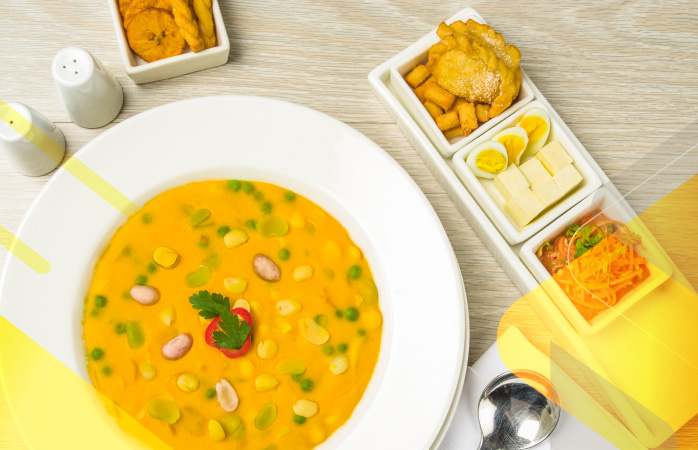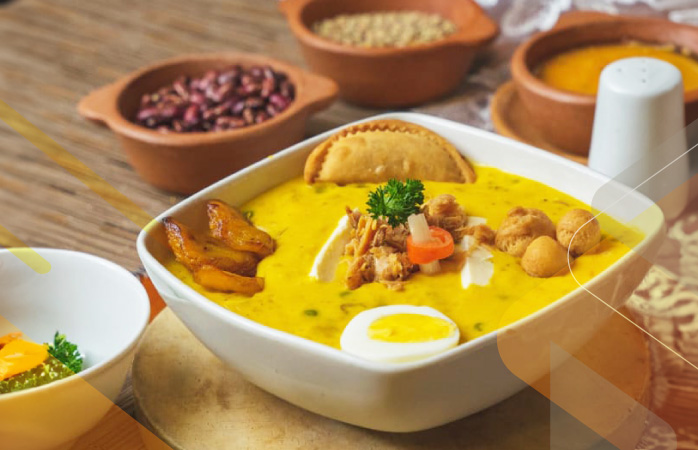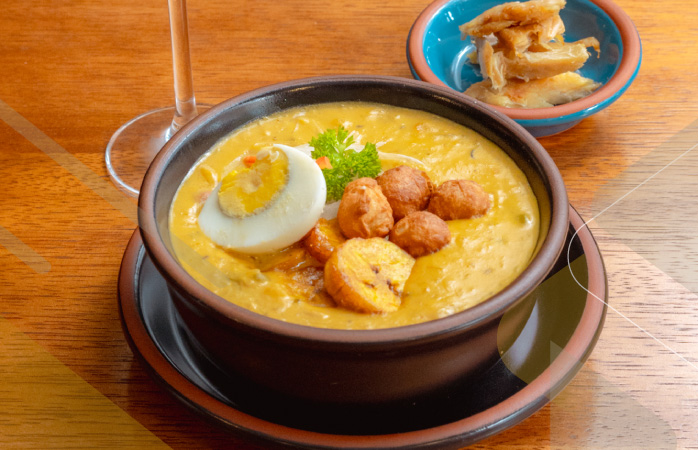
The Rich Tradition of La Fanesca in Ecuador
Fanesca is a dish that embodies the spirit of Ecuadorian cuisine and culture. It’s not just a soup; it’s a culinary event, a historical tradition, and a family affair all rolled into one. Served during Semana Santa (Holy Week), La Fanesca is a rich, hearty soup that brings together the diverse flavors and agricultural bounty of Ecuador.
- History of La Fanesca:
The origins of the Fanesca can be traced back to the indigenous cultures of Ecuador, with influences from Spanish colonial times. It represents a blend of indigenous and European traditions, ingredients, and religious symbolism. The dish is a testament to Ecuador’s history, bringing together native products like corn and beans with introduced items such as milk and cheese.
- How La Fanesca is Made:
Fanesca is renowned for its complex preparation and the variety of ingredients it contains. At its core, the soup is made with 12 different kinds of beans and grains, signifying the 12 apostles of Jesus. Salt cod, a nod to the Catholic tradition of abstaining from meat during Lent, is soaked and desalted before being added to the soup. Ingredients like pumpkin, milk, cheese, and a variety of herbs and spices are also essential. The preparation of La Fanesca is a labor of love, often taking days to prepare and requiring the participation of several family members.
- Cultural Significance:
Beyond its delicious taste, Fanesca holds deep cultural significance. It’s a dish that’s meant to be shared, symbolizing unity and community. The coming together of various ingredients reflects the diversity of Ecuador itself, and the act of sharing the soup with family and friends is an embodiment of communal harmony and celebration of life.
Best Fanesca in Town:
These three esteemed restaurants, Casa Gangotena, Costa Sierra, and San Ignacio, have been honored by the Municipality of Quito in ‘Fanescas, Secrets and Traditions’ competition. Each establishment, celebrated for its unique approach to the traditional fanesca dish, showcases the depth and diversity of Ecuadorian culinary heritage.

Casa Gangotena:
Casa Gangotena’s fanesca stands out as one of the best in Quito, distinguished by its adherence to tradition blended with a unique take that allows diners to personalize their experience. With 11 key ingredients, plus the optional cod fish to honor Ecuador’s agricultural diversity, Casa Gangotena sources the freshest local produce directly from farmers. This dedication to quality is evident in every bite, allowing each distinct flavor to shine through. The original recipe, crafted by Rosa Vintimilla and meticulously refined by Casa Gangotena’s chefs, achieves a perfect balance, showcasing the intricate layering of flavors without overshadowing each component. The presentation enhances the appeal, with a colorful, inviting soup and a side dish of tasty fixings for customization.

San Ignacio:
Nestled in the heart of Quito’s historic center, the restaurant San Ignacio offers a fanesca experience steeped in tradition. Boasting a recipe that has been meticulously passed down through generations for over 80 years, San Ignacio revives traditional flavors with each serving. This classic dish, prepared with a delicious blend of grains, cod, cheeses, and spices, is more than just a meal; it’s a celebration of heritage and culinary craftsmanship. Diners at San Ignacio are invited to indulge in a taste of history, savoring a dish that has been cherished and preserved through the ages.

Costa Sierra:
At Costa Sierra, Fanesca Tradicional de Costa Sierra translates to “Grandma’s Recipe on Your Plate!” This dish is a legacy passed down through three generations of chefs, from his grandmother to the owner Roberto, infusing it with the seasoning and love of a lifetime dedicated to cooking. Costa Sierra’s fanesca is more than just a meal; it’s a nostalgic recall of yesteryear’s flavors, of aromas that once filled the kitchen during Lent. Roberto shares that the magic lies in its traditional preparation with cod because, in his words, “without cod, there is no fanesca.”
La Fanesca is more than just a seasonal dish; it’s a culinary expression of Ecuador’s history, culture, and community values. This Easter, as families across the country prepare and share this beloved soup, they’re not only feeding the body but also nourishing the soul with the rich tapestry of traditions that La Fanesca represents.
Read also:
